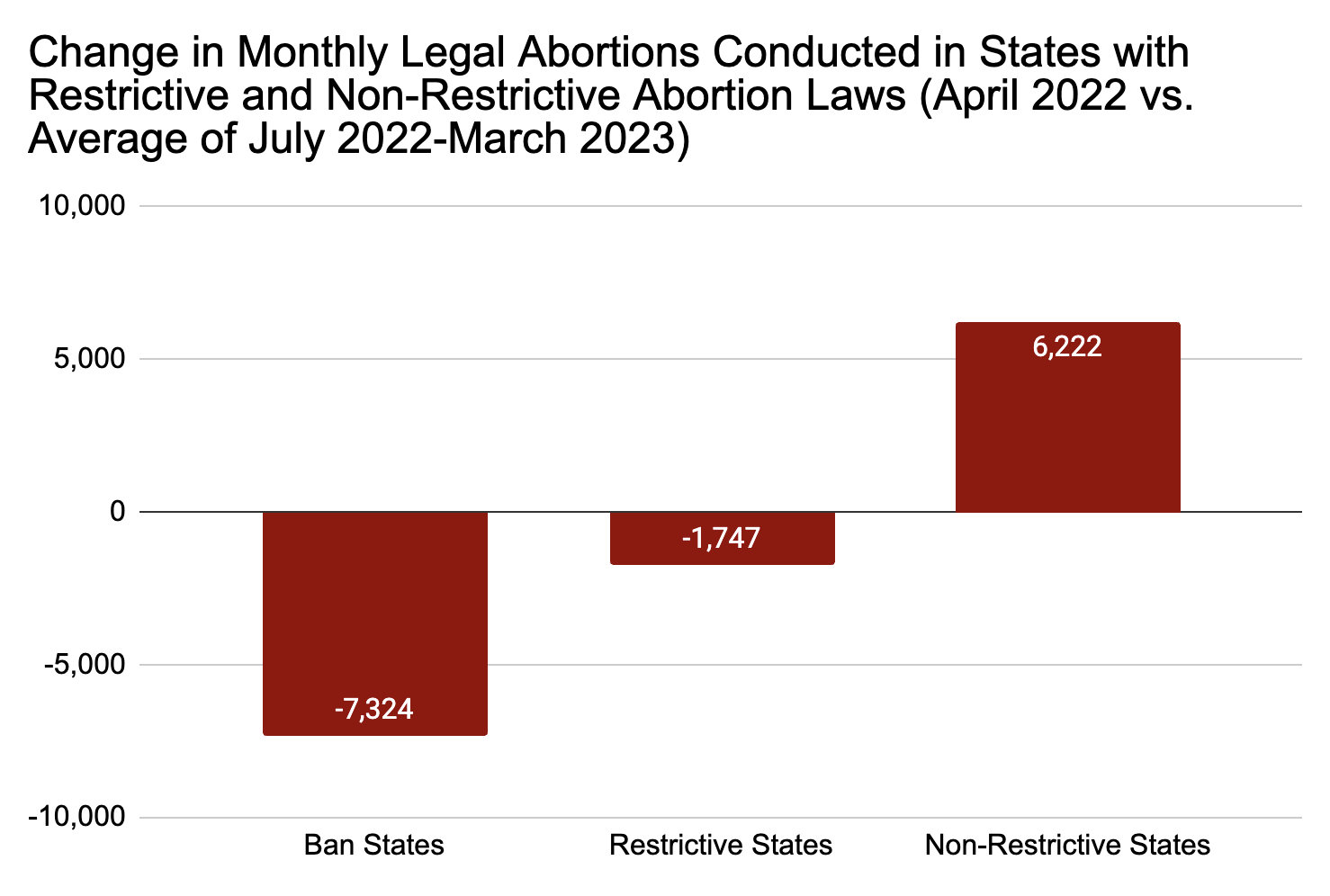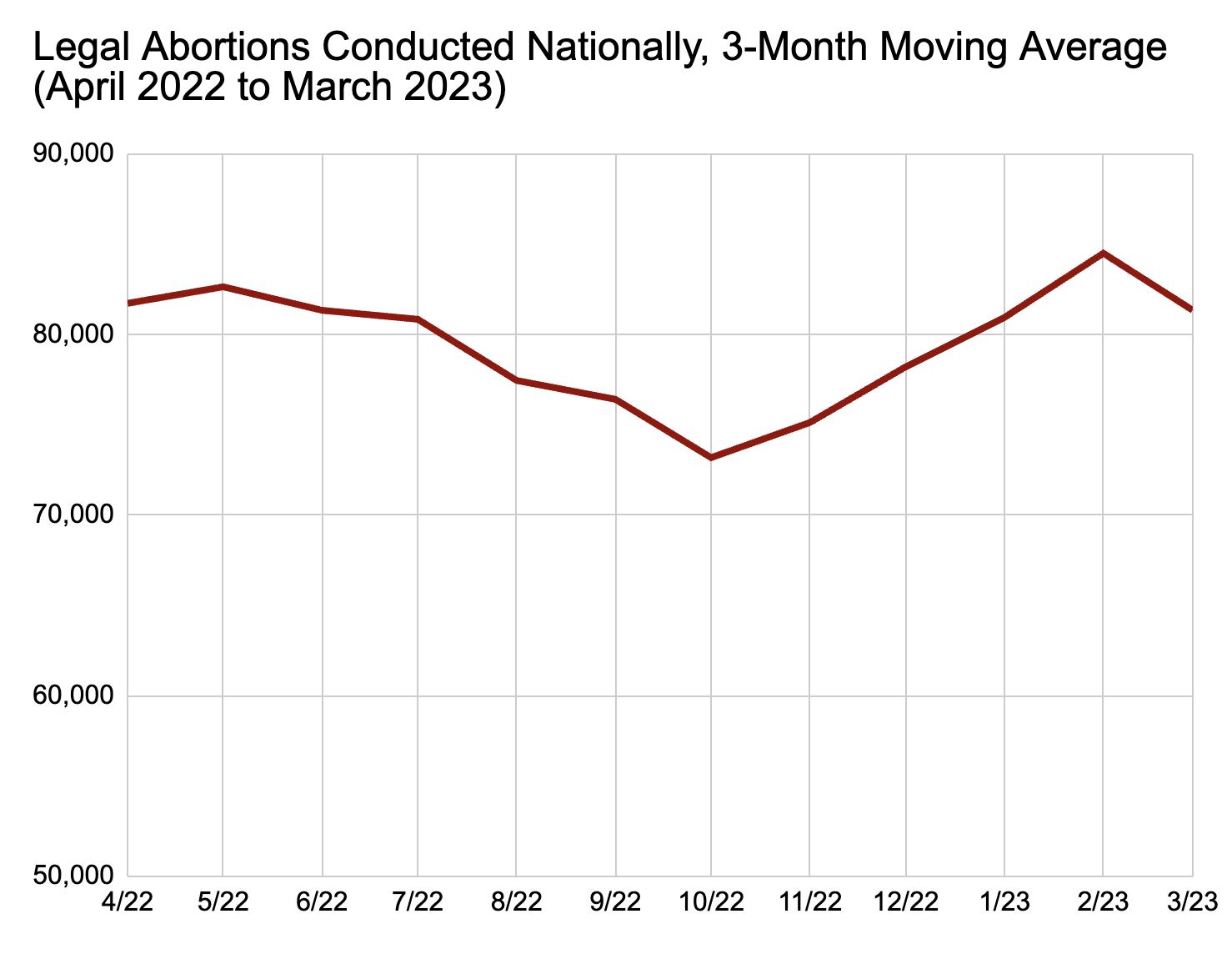Yves here. Matt Bruenig presents what ought to be cheery news, that in the post Roe v. Wade world, abortions have not fallen by very much despite many states having restrictive statutes on the books that were set to kick in immediately, others implementing new curbs.
However, averages and aggregates mask a lot of individual experiences. Abortions were severely restricted in many states due to the death of free/low cost clinics, plus mandated cooling-off periods (young women were required to hear a lecture and watch a video, and then wait 24 hours). For hourly workers, travel time and a de-facto requirement to stay overnight would impose a high cost and risk job loss.
Bruenig shows that for many women, the travel requirements have increased, with the fall of 3% due to a significant rise in abortions in the states that allow them. Even for women who can afford the travel time and cost, there’s still added stress and uncertainty. And of course these restrictions, by design, do keep some women from getting abortions…those who often realize due to personal or financial circumstances, that they can’t do the best job of being a mother when the baby is due.
By Matt Bruenig. Originally published at his website
I’ve written twice before on the question of how much the Dobbs decision, which gave states the power to tighten abortion laws, has actually reduced abortion in the US (I, II). The upshot of those pieces was that it has not reduced abortion very much (~2.5%) because the vast majority of the US population lives in states that have not restricted abortions and most individuals who live in restrictive states can travel to non-restrictive states or self-administer abortion through medication that is not that hard to get through the mail.
Today we got the latest dump of data on the question from the Society of Family Planning and the numbers continue to back up the claim that Dobbs has had a very small impact on aggregate abortions and that what impact it did have is likely waning over time as individuals affected by new restrictions become more knowledgeable about how to receive an abortion in the new legal environment.
In the pre-Dobbs month of April 2022, there were 81,730 legal abortions conducted throughout the US. On the average post-Dobbs month between July 2022 and March 2023, there were 79,031 legal abortions conducted throughout the US. This is a decline of 3.5 percent.
A state-by-state breakdown shows that legal abortions fell in restrictive states but that this decline was mostly offset by a corresponding increase in abortion in non-restrictive states. This indicates that most people in restrictive states are traveling to non-restrictive states to get abortions.

The SFP count only includes legal abortions conducted by abortion providers. This means that it misses all of the abortions conducted through less formal means, such as through abortion pills received through the mail or purchased across the border. These other abortions are necessarily difficult to track, but there is plenty of evidence that they have increased substantially after Dobbs. When those abortions are accounted for, the total decline in abortions is certainly below 3.5 percent and is probably around 1 or 2 percent.
The SFP data also shows that, even when looking only at legal abortions conducted by abortion providers, the post-Dobbs decline in abortion appears to be waning. Indeed, in the last few months of data, national abortions have returned to the levels that they were prior to Dobbs.

This is consistent with the idea that, over time, information about what to do if you want an abortion in a restrictive state will become more widespread, further blunting the effectiveness of the restrictions.


The real question is how many women have died as a result of not having an abortion or needed procedure in time; how many have come near death? Do we know? The fetus is part of the woman’s body, and the developed neo-nate too so when one dies the other does.
Last paragraph of the acticle says it all. I take it to mean 50 Laboratories Of Democracy and The Market Forces at work.
If the $2.40 on the Illinois Tollroad I-294 is too much for travel between Lake County Indiana and Cook County Illinois, then there is US-41 (a.k.a. Lake Shore Drive) to Chicago for free. But in any event, get your gasoline in Indiana and avoid the Skyway. .
Abortion restrictions are like gun laws. They would have to be nationwide to be effective. Chicago has strict gun control laws, but look at how many people are shot in Chicago every weekend, due to guns being brought in from other jurisdictions.
Access to medication abortion is already restricted by state. A judge in TX issued a national ban, but the SC has temporarily stayed the ban.
“3 states have a near-total ban on abortion in effect 15 states restrict access to medication abortion…
15 states require that medication abortion be provided by a physician.
5 states require the patient to have an in-person visit with a physician.
1 state has a gestational age limit on medication abortion provision.
1 state requires that the first of the two-drug regimen for medication abortion be taken in the presence of a physician.
1 state bans mailing pills for medication abortion to a patient.”
https://www.guttmacher.org/state-policy/explore/medication-abortion
https://www.guttmacher.org/2023/04/anti-abortion-judge-attempts-ban-mifepristone-nationwide-ignoring-science-and-more-two
Cue mysterious, steep procedure cost increases in ‘safe-haven’ states.
Ghouls.
Is there any data on percentage of abortion-to-pregnancy?
That is— do changes in absolute numbers reflect changes in relative numbers?